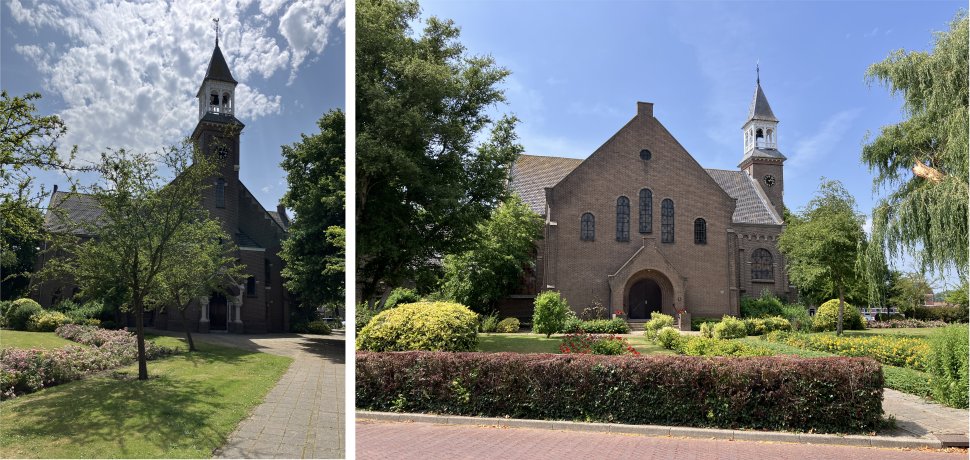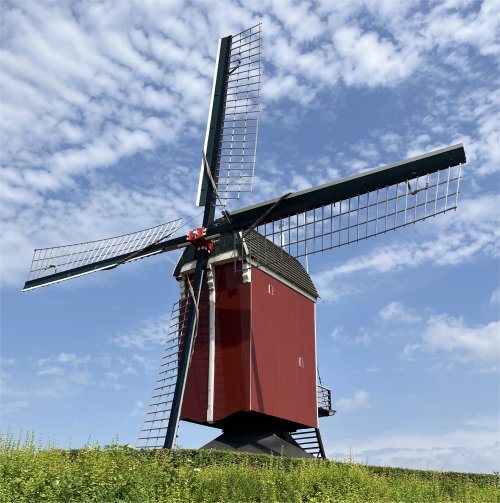 Deserted Voorstraat |
We followed the buoys up through the Oosterschelde, passing the entrance to the Veerse Meer on our port side. To our starboard a lighter shade of grey water betrayed rain approaching, and a huge sandbank, the Galgeplaat which is part of the Nationaal Park Oosterschelde, lurked partly visible. Beyond the Galgeplaat, with its bobs of seals, a narrower channel carried barges passing to and from the Kanaal door Zuid Beveland.
Our course took us up towards the Zeelandbrug, which was becoming surrounded by yachts anticipating the hourly bridge opening, in order for us to skirt around a huge mussel farm in the Engelese Vaarwater. We bore to starboard into the Mastgat towards the Krammersluizen. We now picked up barge traffic again, a floating hotel heading to Antwerp, plus many more yachts. One of the yachts was tacking downstream, and was disillusioned in thinking it could get one more tack in before an approaching barge. The barge captain was not under any delusions and boomed a long toot from his horn. The offending smart alec quickly did an about turn and scuttled off.
We veered off into a channel to our starboard before reaching the Krammersluizen, into the Krabbenkreek which led us down towards Sint-Annaland and another downpour ahead. A quick call to the harbour master resulted in a berth allocation. We slowly entered the marina following a large yacht under tow; perhaps it was quite aptly displaying a "Te Koop" sign - For Sale.
I checked us in, and received the necessary instructions and in addition advised that all the facilities: shops, eating and drinking establishments in the village would all be closed since it was Sunday. This is something we did not expect, and the lady in Middelburg who mentioned and praised Sint-Annaland did not point this out. Hmmm………..
Sint-Annaland is situated on the island of Tholen in eastern Zeeland. It was first mentioned in 1493 as Sint Annenlant, and is named after Saint Anne, the patron saint of Anna van Bourgondië who ordered the poldering of the land. Sint-Annaland developed after the salt marshes of the Oudelandpolder were dyked in 1476. In 1668, the Suzannapolder, named after the daughter of Constantijn Huygens, was reclaimed and a harbour was added to the village.
We set off to explore the village, which had the classical layout of a ring village with a main street, Voorstraat, leading from the harbour to the church, itself encircled by a prim circle of houses. The pretty village was indeed shut today, but pictures we came across indicated it to be a hive of activity during the week, especially on market days.
 Nonnentjeshuis |
Continuing on, we arrived at the centre of the village where the church stood proudly. The original cruciform church was lost in 1492. The Dutch Reformed Church was built in 1899 as a cruciform church and features a tower with a wooden lantern and tent roof. Of course, it too was closed.
 The Dutch Reformed Church |
 Molendijk Post Mill |
Apparently since 1899, there has been a potato auction in Sint-Annaland. It is the only remaining potato auction of the Netherlands and functions as a Dutch auction where the buyers have to watch the clock and the potatoes are sold to whoever presses the button first. It is open for tourists on Wednesdays. Another feature of the village and taking pride of place is the cultivation of the madder dye-crop, its red dye a major source of income.
 Evening at Buutengaets |
The food was good, and every table in the restaurant was occupied. One table was slowly being dripped upon by the air-conditioning system, another had an elderly couple who nursed their food and drink in order to prolong their evening. A very large table had at least four generations sitting around it, the younger generation looking bored to tears. I wondered what they thought of us.
